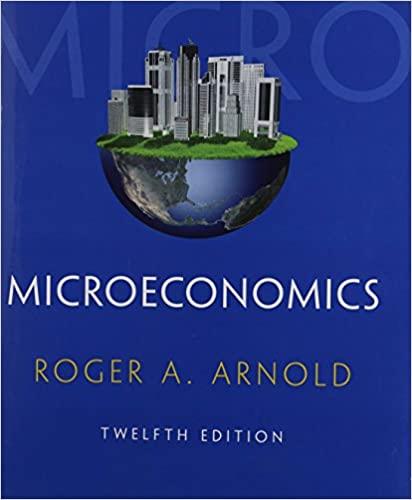Question
Exercise 3.2 In this problem, solve the equilibrium population of an idealized city experiencing rural - urban migration, following the augmented Harris-Todaro model from chapter
Exercise 3.2
In this problem, solve the equilibrium population of an idealized city experiencing rural - urban migration, following the augmented Harris-Todaro model from chapter 3. The incomes earned in urban employment and in the rural area are y and yA , respectively, and t is commuting cost per mile. J is the number of available urban jobs.
(a) Suppose the city is on an island and is a rectangle 10 blocks wide with the employment center at one end. The city spreads out along the length of the island to accommodate its population, with its edge located x blocks from the employment center. Compute the city ' s land area in square blocks as a function of x . Assuming that each urban resident consumes 0.001 square block of land, compute the amount of land needed to house the city ' s population L . Set the resulting expression equal to the city ' s land area, and solve for x in terms of L .
(b) With J jobs in the city, the chance of a resident getting one of the jobs is J / L , which makes the expected income of a city resident equal to y ( J / L ). The expected disposable income net of a commuting cost for a resident living at the city ' s boundary is then y ( J / L ) - t x . The rural - urban migration equilibrium is achieved when this disposable income equals the rural income, as was explained in chapter 3. Write down this equation, and substitute your solution for x in terms of L from (a). Then multiply through by L to get a quadratic equation that determines L .
(c) Suppose that y = 10,000, yA = 2,000, t = 100, and J = 30,000. Substitute these values into your equation from (b), and use the quadratic formula to solve for L (it ' s the positive root). The answer gives the city ' s equilibrium population.
(d) In equilibrium, what is the chance of getting an urban job? What is the implied unemployment rate in the city?
(e) What is the distance to the edge of the city? How much does a resident living at the edge spend on commuting?
(f) Suppose that y rises to 12,000. Repeat (c), (d), and (e). Give an intuitive explanation of the changes in your answers to (c) and (d).
Step by Step Solution
There are 3 Steps involved in it
Step: 1

Get Instant Access to Expert-Tailored Solutions
See step-by-step solutions with expert insights and AI powered tools for academic success
Step: 2

Step: 3

Ace Your Homework with AI
Get the answers you need in no time with our AI-driven, step-by-step assistance
Get Started


